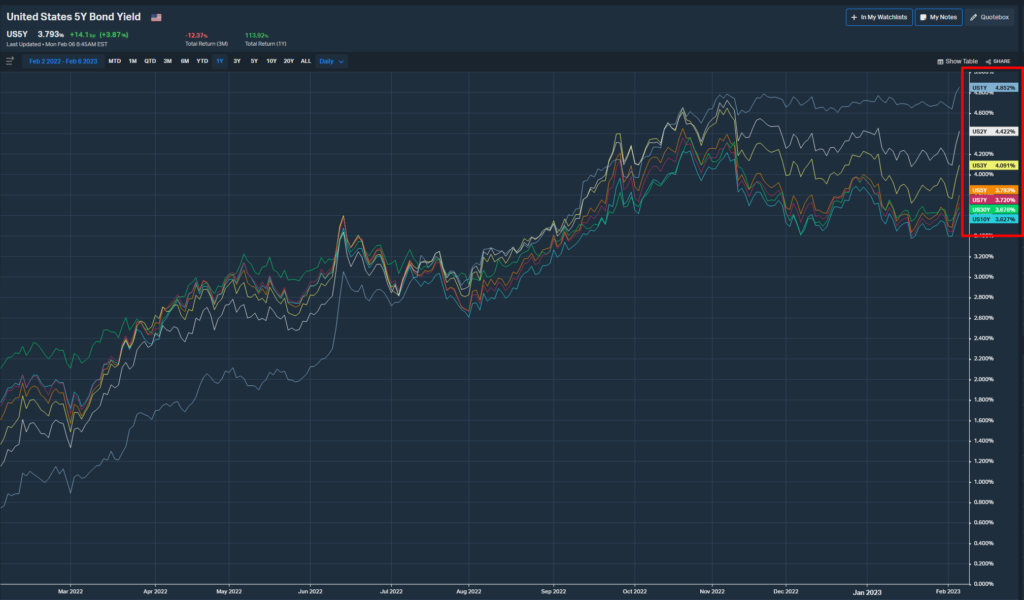The US yield curve has been badly inverted for over the last year. Short-term bond rates surpassing longer-term ones is known as “yield curve inversion”. Depending on the inversion and how long it lasts, this typically predicts a recession. Why?
We associate a nice upward-sloping yield curve for sovereign debt with a healthy economy. This means the 30-year Treasury bond has a higher interest rate than the 10-year bond, the 10-year a higher rate than the 5-year, etc.
However what we have currently in the US are yields that look like this:

Notice how many of the short-term yields are greater than the long-term ones. All things equal, longer-term debt should almost always pay a higher rate than short term. So what happened here?
Just as there isn’t one price for wheat or corn, but rather a price for it at a point in time (this is what futures and their month of expiration mean), the price and demand for dollars can be conceptualized this way with the yield curve and interest rates: futures for dollars.
Money has a temporal element to it. The creation of money doesn’t actually happen from the Fed “printer” (which is just a big asset-swapping machine, not asset-creating), but from banks. Banks loan against their collateral, birthing dollars in the process; when those loans are paid back, those dollars die. This fractional-reserve-lending dollar creation is the backbone of the US banking system.
We are a debt-based monetary system, and money created via debt has an expiration date. Low interest rates are associated with easy money, but it’s important to remember why that money is easy: not enough people want to buy it. If sellers are lowering the price of money further out in the curve, that means there’s less demand for it. That lack of demand means less dollars will be lent into existence at future dates. Since lending is how dollars are made, and a debt-based system needs more dollars to keep growing, this presents an issue.
Think of it like a money lifecycle. Dollars continue to die as debts are repaid; an inverted curve means not enough dollars will be birthed to offset it. Economies need growing populations and money supplies to keep expanding, an inverted yield curve is portending a decline in the money population.
This is how yield curves predict recessions.
The lack of dollar demand being shown later in the curve conveys decreased economic output, and less dollars will be loaned into existence at future dates. Dollar creation is something the system needs to continue economic growth.
Follow at @BackTheBunny
Check out another popular post --> Crypto, Dollars, Gold, and Layer 4 Money



Reading your article helped me a lot and I agree with you. But I still have some doubts, can you clarify for me? I’ll keep an eye out for your answers.
Reading your article has greatly helped me, and I agree with you. But I still have some questions. Can you help me? I will pay attention to your answer. thank you.